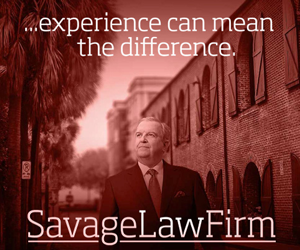 Mark Sanford’s Lonely Battle for Austerity: Did It Lead Him to the Appalachian Trail?
Mark Sanford’s Lonely Battle for Austerity: Did It Lead Him to the Appalachian Trail?
My new book about President Obama and his stimulus, The New New Deal, unspools the politically shrewd but remarkably cynical GOP strategy to obstruct the President. Congressional Republicans who supported stimulus in 2008 and even voted for a $715 billion stimulus in 2009 somehow pegged Obama’s similar $787 stimulus as the death of capitalism, although they still pursued stimulus cash for their districts. GOP governors who denounced the stimulus as fiscal lunacy quietly used its aid to states to balance their hemorrhaging budgets. But there is at least one principled Republican politician in the book: Mark Sanford, the now-disgraced former governor of South Carolina.
Sanford was a true limited-government conservative, an honest deficit hawk and austerity ideologue who favored massive spending cuts during an economic free-fall. He did not pretend, as so many Republicans did, that austerity would reverse the slide, which is economically ridiculous. Like President Hoover’s treasury secretary, Andrew Mellon, he argued that America needed to purge the rottenness from its system, by shrinking its government and eliminating its red ink even if it had to endure the pain of another depression first. He actually bragged to me about the unpopularity of his policies. “Nobody likes Dr. Doom,” he chortled. For too long, he said, the GOP had been a party of pastry chefs, urging Americans to eat all the dessert they wanted: “We need to become a party of country doctors, telling people that this medicine won’t taste good at all, but you need it.”
Sanford was not the only conservative Republican who talked a big game about stimulus; Bobby Jindal of Louisiana, Rick Perry of Texas, Haley Barbour of Mississippi, and Sarah Palin of Alaska all vowed to turn down freedom-crushing stimulus dollars headed for their states. But Sanford was the only one who actually tried to put less money where his mouth was, turning down $700 million designed to prevent layoffs of teachers and other public employees. The others accepted almost every dime; Perry even tried to use some of it to renovate his governor’s mansion. Granted, it had been firebombed, but the hypocrisy was intense.
Sanford liked to say he was “Tea Party before Tea Party was cool,” a former financial analyst who had distributed bumper stickers during his 1994 run for Congress that said DEFICIT with a Ghostbusters-style slash through it. He believed that accepting the one-time stimulus windfall—and its “maintenance of effort” rules prohibiting education cuts—would prevent South Carolina from making the tough choices necessary to live within its means. Just as Obama saw the crisis as an opportunity to make investments in priorities like clean energy, infrastructure, and research, Sanford saw it as an opportunity to make the painful cuts that politicians habitually avoid “when times are good and people are fat, dumb and happy.”
Sanford only wanted to turn down 8 percent of his state’s stimulus cash, less than 2 percent of his state’s budget. But the backlash was ferocious. Protesters built a tent city called “Sanfordville” near the capitol. Business-funded scare ads predicted horrific consequences if he got his way. The Republican leaders of the state legislature denounced him as a heartless Scrooge intent on “budgetary Armageddon,” warning that without the extra cash South Carolina would have to fire teachers and cops, shutter programs for autistic and disabled kids, fling open the doors to state prisons and dismantle the safety net when it was needed most.
“I’m a conservative, but I’ve got compassion for the poor, the blind, the mentally ill,” groused a powerful GOP legislator, Hugh Leatherman. “Sanford wants chaos. Absolute chaos! He’s destroying this state, and the Republican Party, too.”
When I sat down with Sanford, the venom didn’t seem to bother him much. Wearing jeans and a denim shirt, he lounged on his office couch like he was home watching a game. “I sleep like a baby,” he said. South Carolina had the nation’s third-highest jobless rate, and he knew the Obama money could avert some short-term suffering. But he wasn’t interested in postponing the day of reckoning. “I get it: I’m supposed to be proactive,” he said. “I know, more spending is supposed to lead to recovery, and then we’ll be able to pay back all our debts. That’s a hope, not a plan.”
Sanford wasn’t surprised that his fellow Republicans were giving him flak. He believed he belonged to a party of hypocrites whose anti-spending fervor tended to cool whenever they had a chance to do some spending themselves. He was pleased to see Republican congressional leaders rediscovering the old-time religion of No, but it seemed mighty convenient that their passion for limited government only reignited once they lost control of the federal purse strings. “They were on the opposite side just a few months ago when they had the keys to power,” he said.
Ultimately, Sanford didn’t even have the power to turn down the free money. The stimulus bill allowed state legislatures to accept money that governors refused, and the supposedly archconservative South Carolina legislature did just that. And two months after we met, Sanford’s political career imploded when he told his staff he was going hiking on the Appalachian Trail, then admitted at a weepy press conference that he had gone to visit his mistress in Buenos Aires.
When we spoke again two years later, Sanford said the ruckus over the stimulus had bothered him more than he had let on, and hinted it may have influenced his erratic behavior.
“There’s a remarkable loneliness when you push against the current,” he said. “It was the loneliest I’ve been in my life. It doesn’t justify my actions. But it was an unbelievably lonely time.”
Read more: http://swampland.time.com/2012/08/24/mark-sanfords-lonely-battle-for-austerity-did-it-lead-him-to-the-appalachian-trail/#ixzz24VCCAiR2






I guess that Argentina tryst was ultimately Obama’s fault, too!